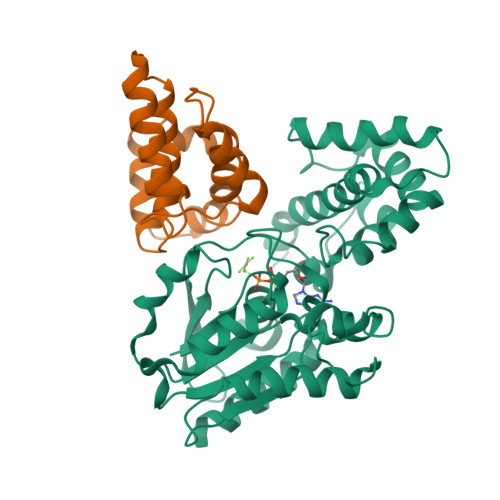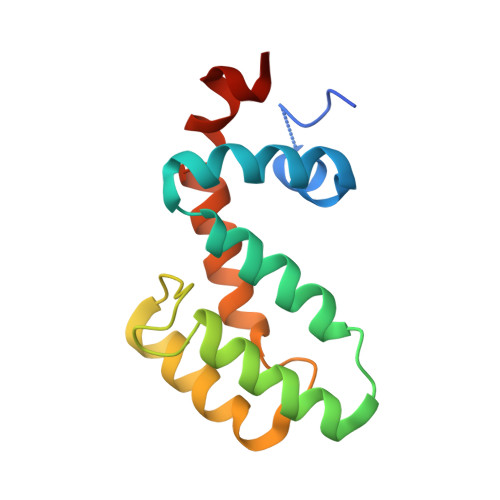Molecular architecture of G{alpha}o and the structural basis for RGS16-mediated deactivation.
Slep, K.C., Kercher, M.A., Wieland, T., Chen, C.K., Simon, M.I., Sigler, P.B.(2008) Proc Natl Acad Sci U S A 105: 6243-6248
- PubMed: 18434540
- DOI: https://doi.org/10.1073/pnas.0801569105
- Primary Citation of Related Structures:
3C7K, 3C7L - PubMed Abstract:
Heterotrimeric G proteins relay extracellular cues from heptahelical transmembrane receptors to downstream effector molecules. Composed of an alpha subunit with intrinsic GTPase activity and a betagamma heterodimer, the trimeric complex dissociates upon receptor-mediated nucleotide exchange on the alpha subunit, enabling each component to engage downstream effector targets for either activation or inhibition as dictated in a particular pathway. To mitigate excessive effector engagement and concomitant signal transmission, the Galpha subunit's intrinsic activation timer (the rate of GTP hydrolysis) is regulated spatially and temporally by a class of GTPase accelerating proteins (GAPs) known as the regulator of G protein signaling (RGS) family. The array of G protein-coupled receptors, Galpha subunits, RGS proteins and downstream effectors in mammalian systems is vast. Understanding the molecular determinants of specificity is critical for a comprehensive mapping of the G protein system. Here, we present the 2.9 A crystal structure of the enigmatic, neuronal G protein Galpha(o) in the GTP hydrolytic transition state, complexed with RGS16. Comparison with the 1.89 A structure of apo-RGS16, also presented here, reveals plasticity upon Galpha(o) binding, the determinants for GAP activity, and the structurally unique features of Galpha(o) that likely distinguish it physiologically from other members of the larger Galpha(i) family, affording insight to receptor, GAP and effector specificity.
Organizational Affiliation:
Department of Biology, University of North Carolina, Chapel Hill, NC 27599, USA. kslep@bio.unc.edu





















